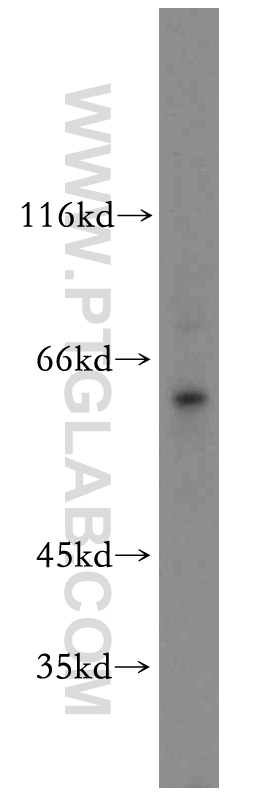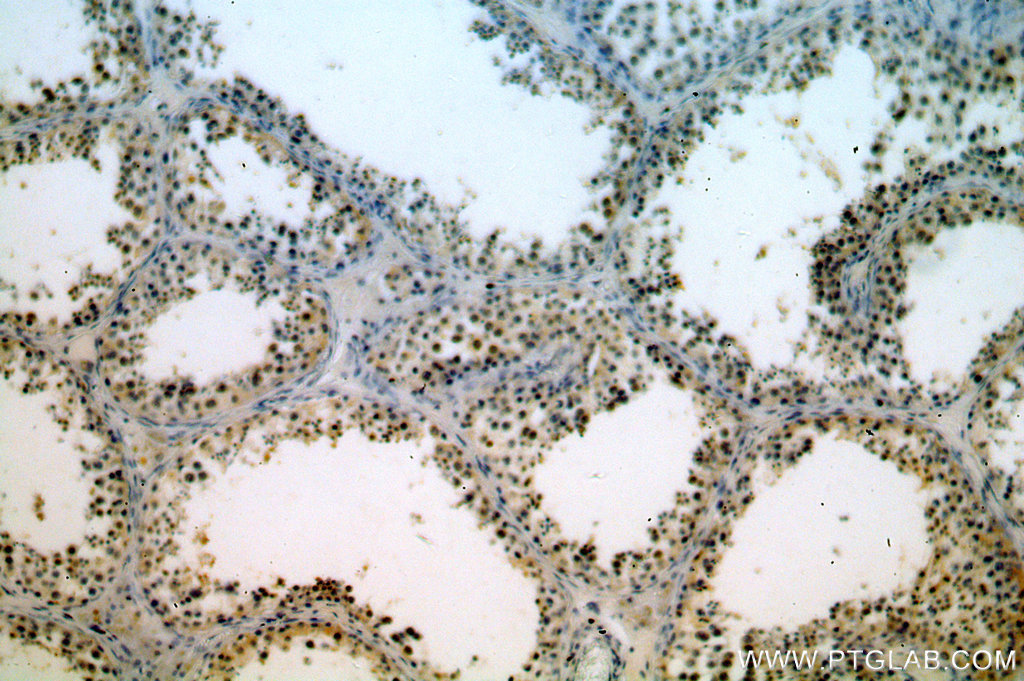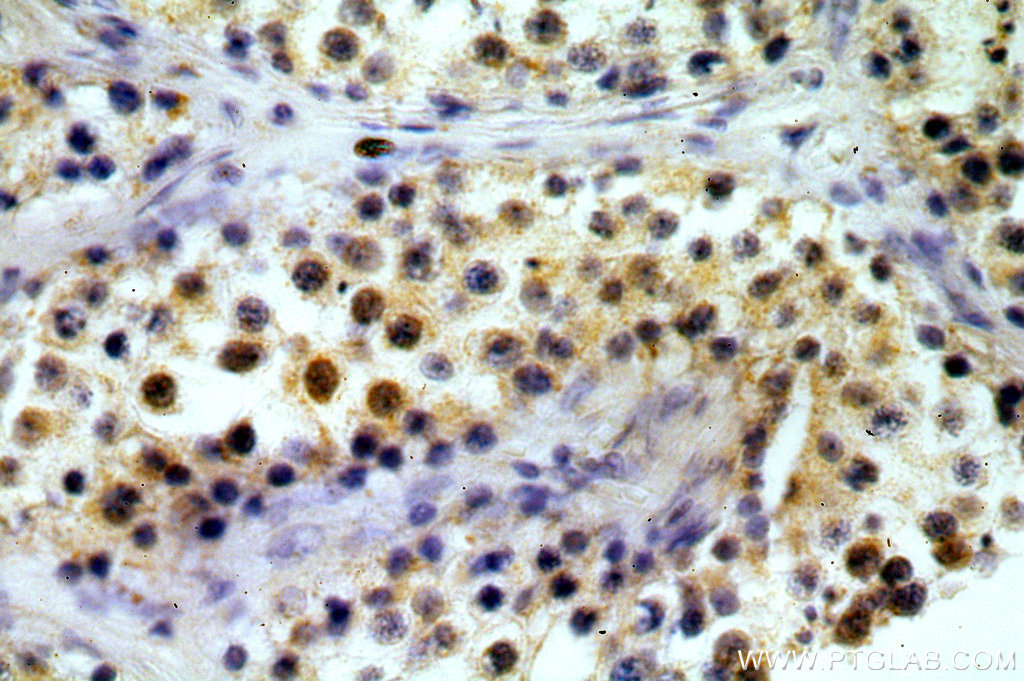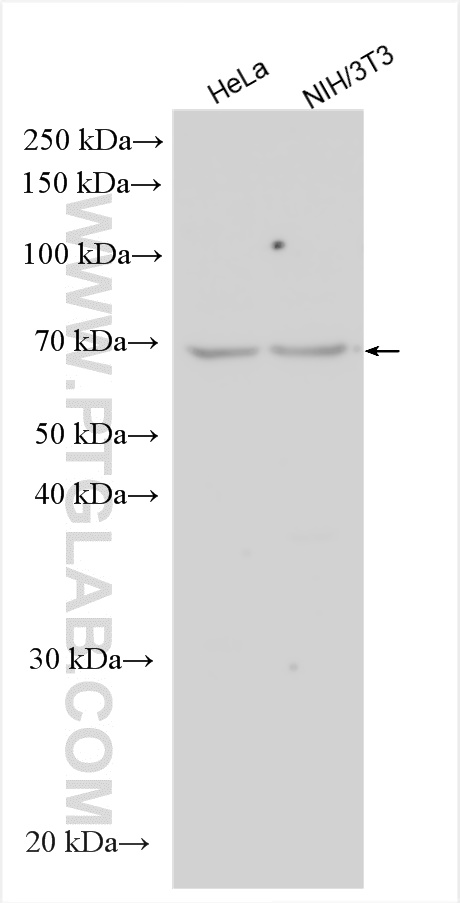TAF1B Polyclonal antibody
TAF1B Polyclonal Antibody for WB, IHC, ELISA
Host / Isotype
Rabbit / IgG
Reactivity
human
Applications
WB, IHC, ELISA
Conjugate
Unconjugated
验证数据展示
经过测试的应用
| Positive WB detected in | HeLa cells, NIH/3T3 cells |
| Positive IHC detected in | human testis tissue Note: suggested antigen retrieval with TE buffer pH 9.0; (*) Alternatively, antigen retrieval may be performed with citrate buffer pH 6.0 |
推荐稀释比
| Application | Dilution |
|---|---|
| Western Blot (WB) | WB : 1:500-1:1000 |
| Immunohistochemistry (IHC) | IHC : 1:20-1:200 |
| It is recommended that this reagent should be titrated in each testing system to obtain optimal results. | |
| Sample-dependent, Check data in validation data gallery. | |
产品信息
12818-1-AP targets TAF1B in WB, IHC, ELISA applications and shows reactivity with human samples.
| Tested Applications | WB, IHC, ELISA Application Description |
| Tested Reactivity | human |
| Immunogen | TAF1B fusion protein Ag3267 种属同源性预测 |
| Host / Isotype | Rabbit / IgG |
| Class | Polyclonal |
| Type | Antibody |
| Full Name | TATA box binding protein (TBP)-associated factor, RNA polymerase I, B, 63kDa |
| Synonyms | RAF1B, RAFI63, SL1, TAF1B, TAFI63, TBP associated factor 1B |
| Calculated Molecular Weight | 588 aa, 69 kDa |
| Observed Molecular Weight | 61 kDa |
| GenBank Accession Number | BC018137 |
| Gene Symbol | TAF1B |
| Gene ID (NCBI) | 9014 |
| RRID | AB_10644160 |
| Conjugate | Unconjugated |
| Form | Liquid |
| Purification Method | Antigen affinity purification |
| UNIPROT ID | Q53T94 |
| Storage Buffer | PBS with 0.02% sodium azide and 50% glycerol pH 7.3. |
| Storage Conditions | Store at -20°C. Stable for one year after shipment. Aliquoting is unnecessary for -20oC storage. |
实验方案
| Product Specific Protocols | |
|---|---|
| WB protocol for TAF1B antibody 12818-1-AP | Download protocol |
| IHC protocol for TAF1B antibody 12818-1-AP | Download protocol |
| Standard Protocols | |
|---|---|
| Click here to view our Standard Protocols |



